Last Sunday morning, the Safra Yishun Running Club organised a Sports Clinic. This took place within the club compounds – from 7am in the morning until around noon.
A dynamic warm up session and 5km time trial
The event had started with a warm up session led by elite Singaporean middle distance runner Marcus Ong, and this was then followed by a 4.8km time trial which Marcus had also participated in himself.
During the warm up session, Marcus led runners through a series of dynamic drills. According to him, dynamic drills are preferred over static ones – because they would help to fire up the muscles and joints for the morning’s workout session ahead.
Sports Massage techniques with David Shum
And upon completion of the run, David Shum – an avid marathon runner and running coach with the Safra Tampines Running Club – led us through a series of useful sports massages.
According to David, doing regular sports massages are definitely important – especially for endurance runners. This is because massaging will help to release tension and pressure built up in the muscles after each hard running session.
Some of the massage technique demonstrations – for various types of niggling pains in runners – that David demonstrated are as follows. (See Video).
David also added that if you do not have an expert around to perform the massages for you, then you can also self massage with a towel, hockey ball or foam roller.
Stretching and strengthening
Stretching and strengthening exercises is also a great way to strengthen muscles and joints that may be weak according to to David. He said, “Stretching really helps, but not enough runners do it.”
David added, “For example many runners engage their hip flexor muscles when they are running. You may run with your entire leg and have strong calves, quads and hamstrings, but without strong hips, you will not be able to run efficiently.”
Running efficiently with Marcus Ong
Marcus then led the runners at the session through a talk on how to run more efficiently. Read on to find out more about what Marcus had shared at the session.
Drills and Conditioning
Said Marcus, “Before every run you need to stretch. Whenever I run, I make sure that I stretch my hips, soleus muscles, glutes and calves. Activating all of these elements means that I can extend my hips further and have that forward motion when running. At the same time it helps to prevent injury.”
There are five types of running drills that Marcus recommends and these are:
- Butt kicks. For this exercise, you bring your heels up towards your buttocks. It primary works the hamstrings and butt muscles.
Explained Marcus, “Do not slouch when running; instead you should run upright with your chest up and try to push off as fast as you can, to activate the glute muscles.
He added, “This is what this drill helps to do; when doing it, you need to touch your butt at all times and do it as fast as possible.”
- High Knees. For this exercise you would typically run on the spot, while lifting your knees high up to your waist.
Said Marcus, “For this drill you need to have a forward pump and should be able to hear the thud of your feet on the ground. You should also feel your hips and quadriceps working and your toe activating. This is the second most important exercise in my routine.”
- Shuffle Squats. This exercise requires you to hold the standard squat position whilst shuffling sideways from side to side.
Says Marcus, “This is good to activate the legs and lungs; I always do it before a race and I think that it works for anyone.”
- Fast hand movements. This exercise requires you to hold your hands to chest level and move them back and forth, with elbows bent, as fast as possible – as though you are running.
Says Marcus, “If you feel as though you are breathing hard, then you are doing this correctly. It is basically an exaggerated forward hand movement but it actually works the glutes as well as the arms.”
- Dynamic Lunges. This is basically fast, steady lunges that are done quickly.
Explained Marcus, “Many people tend to do slow, walking lunges but I think that this version is more effective.”
Marcus generally recommends doing these drills about three times a week on an average.
Training
To train for his races, Marcus has a base building phase and a competition phase.
He said, “During the base building phase I do long runs with no speed involved. I cover about 30km per day and my peak week would be about 150 – 200km in total. That lasts about two months, then I kick into competition gear whereby I do plenty of speed workouts.”
He added, “My slowest training run can be 10mins/km for about an hour; the emphasis of these is to activate my glutes, back muscles and hamstrings; the slower you run the more sore you will feel, but this will help to strengthen the body in the long term.”
Marcus also added that he does his runs via a mixture of heart rate and body feel. He says, “During hard workouts, I get a heart rate monitor to check my heart rate is on target, but for long runs, I do them by feel. I tend to do these with negative splits, that is, by starting slow and ending them very fast.”
Types of Training Grounds
Says Marcus, “I train on track or grass; never on concrete because running regularly on concrete puts a lot of force on the knee. But for grass and track surfaces, the impact is much softer on the heels and will thus reduce your rates of getting injured.”
He added, “Also you can run more exact distances on the track, for example on the roads how do you know you are running exactly 10km? But on a 400m track, I run 25 Laps and I know that I have done 10km.”
Recovery
Said Marcus, “Every month I go for a deep tissue massage and after every workout I have an ice bath.”
To Marcus these recovery techniques are useful, because they help to reduce the muscle soreness after a hard or a long run. This is due to the fact that running causes muscle breakdown and inflammation, as a result of lactic acid built up in the muscles. So deep tissue massage and ice bath will help to circulate blood through the body and at the same time, move waste products like lactic acid, out of the muscles. This is then supposed to improve the rate of post-run recovery.
Marcus also shared some tips about self-recovery after his runs. (See Video).
Shoe Selection
Said Marcus, “When doing drills and slow runs, I recommend heavy shoes; this is because you will feel heavy and lethargic quicker in such shoes. So then when you run your race in light shoes or racing spikes, you will fly.”
He added, “Even for my speed training, I do not wear spikes; on the other hand you should wear light shoes to race because it improves your speed and performance.”
Nutrition
Marcus does not have a strict diet for his running.
He says, “Pre race, I eat junk foods such as deep fried chicken and soft drinks. But the night before the race, I will eat a small meal containing a small amount of rice with plenty of vegetable and meat, to keep my weight to a minimum; by doing this it helps me to feel lighter and thus run faster.”
He added, “Junk food makes me happy; if I stress myself out with training and then stress out again with my diet, I will be miserable. But then again have to moderate and cannot overdo it with the junk food diet. 10 minutes post race I will eat a banana and walk slowly; do not sit down too, or else you will get cramp.”
In the morning of the race, Marcus takes hot milo. He says, “If I take coffee I will sleep! Also, cold milo or chocolate sends me to sleep. I also eat bananas and bagels for the energy during the run.”
Hydration
And Marcus said, “Before a race or training run, I do not take isotonic drinks because the energy would not have been used yet. But during the race or a training session, I will take isotonic drinks from 15 minutes onwards, so that I can keep on going forward without stopping.”
Reducing of cramps
Marcus added, “When doing long races such as full marathons, there are two main reasons why people get cramp; this could be either due to low mileage or lack of salt. Before a race to reduce cramp, I will take extra helpings of salt in my pasta meal. But you can also buy salt tablets from Running Lab or other running stores.”
Calf Guards
To Marcus, calf guards are more useful for pre and post race, rather than during the actual race.
He explained, “I wear calf guards before and after the race. Before the race is to keep warm and after the race, is to keep the blood flowing to my muscles and thus reducing muscle fatigue.”He added “Personally I ran with calf sleeve before and my muscle fibres didn’t seem to be activating as they should; but then again this is a personal choice, and it varies from person to person though.”

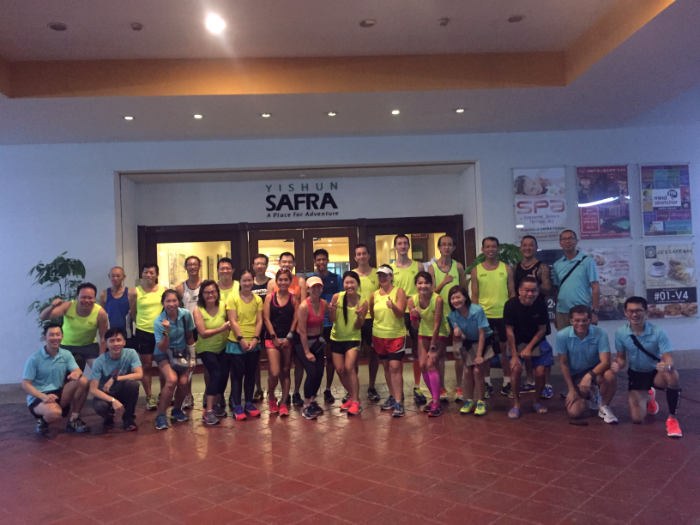
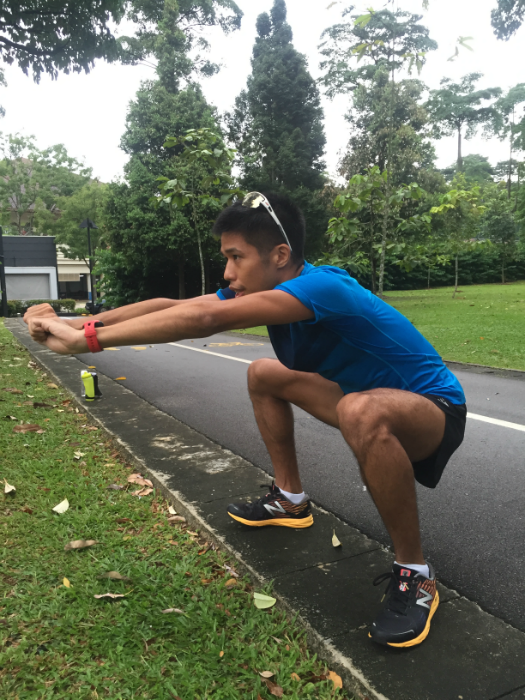

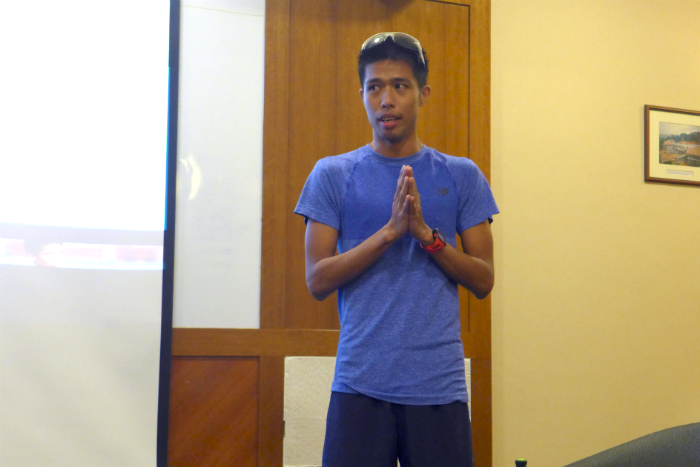
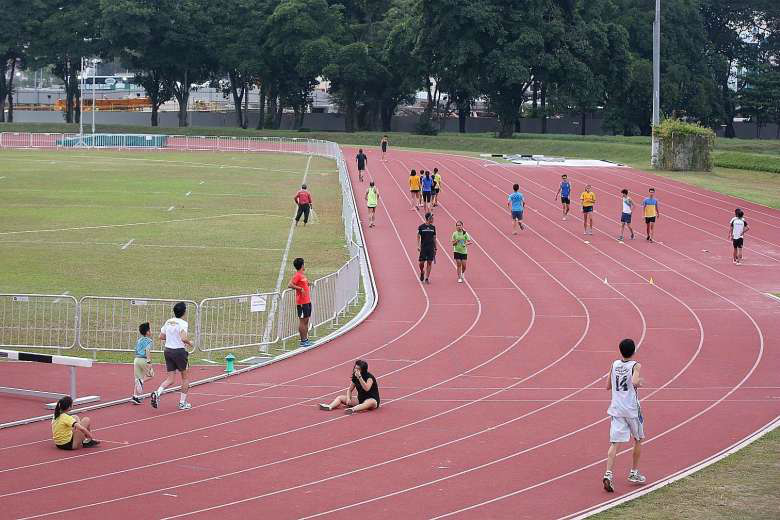
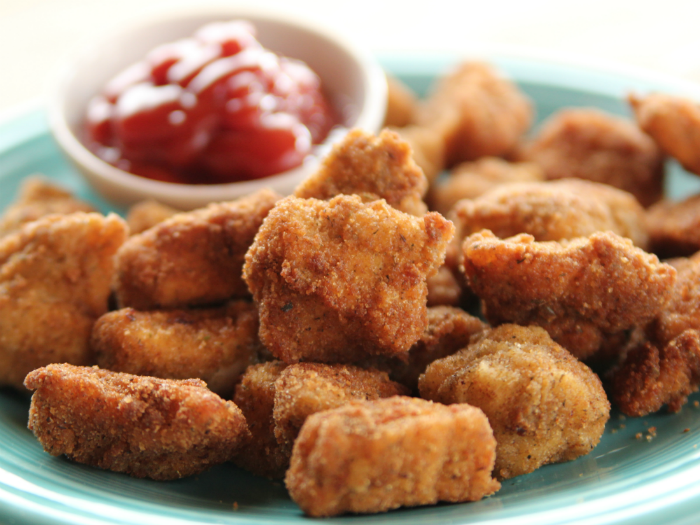
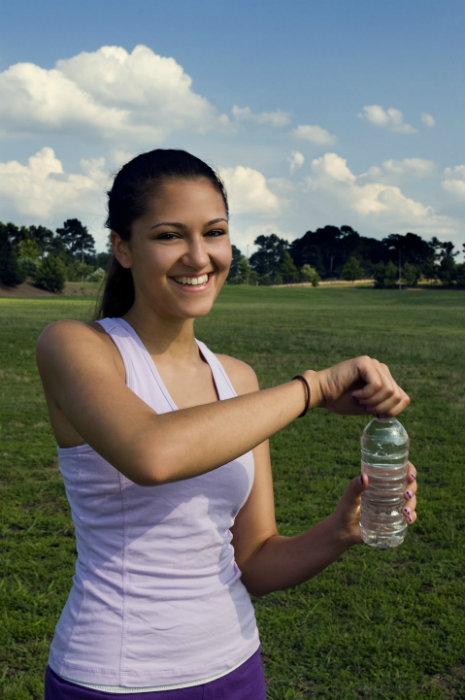
![With the committee members and the two speakers after the session. [Photo credit to Wong Mun Wai]](https://www.prischew.com/wp-content/uploads/14715527_875575145906660_6055657420348918086_o.png)
Leave a Comment